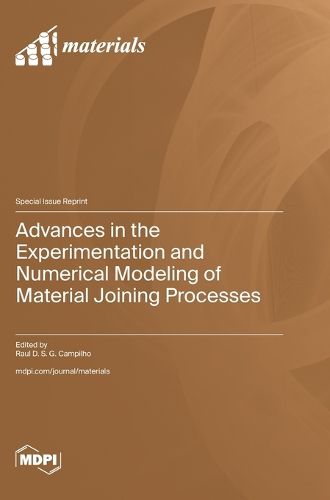Readings Newsletter
Become a Readings Member to make your shopping experience even easier.
Sign in or sign up for free!
You’re not far away from qualifying for FREE standard shipping within Australia
You’ve qualified for FREE standard shipping within Australia
The cart is loading…






"Advances in the Experimentation and Numerical Modeling of Material Joining Processes" is an innovative compilation offering a comprehensive exploration of the latest developments in material-joining techniques. With 22 chapters, this MDPI scientific reprint addresses adhesive bonding, welding, friction stir welding, hybrid joining, and miscellaneous topics. The editorial (Chapter 1) provides the main limitations, possible improvements, active research lines, and prospects of material joining processes. Chapters 2 to 10 relate to adhesive bonded and welded joints. Chapters 11 to 17 shift the focus to friction stir welding, covering the aerospace industry's progress, microstructure analysis, tool tilt angles, and corrosion behaviour. Hybrid joining processes are the topic of chapters 18 and 19, discussing numerical simulation of laser-arc hybrid welding and steel-aluminium joints made by resistance spot welding. Chapters 20 to 22 explore miscellaneous topics, including interpenetrating phase composites and concrete blocks in seismic areas. This volume serves as a vital resource for researchers, engineers, and practitioners, enabling a deeper understanding of material-joining techniques and inspiring further innovation.
$9.00 standard shipping within Australia
FREE standard shipping within Australia for orders over $100.00
Express & International shipping calculated at checkout
"Advances in the Experimentation and Numerical Modeling of Material Joining Processes" is an innovative compilation offering a comprehensive exploration of the latest developments in material-joining techniques. With 22 chapters, this MDPI scientific reprint addresses adhesive bonding, welding, friction stir welding, hybrid joining, and miscellaneous topics. The editorial (Chapter 1) provides the main limitations, possible improvements, active research lines, and prospects of material joining processes. Chapters 2 to 10 relate to adhesive bonded and welded joints. Chapters 11 to 17 shift the focus to friction stir welding, covering the aerospace industry's progress, microstructure analysis, tool tilt angles, and corrosion behaviour. Hybrid joining processes are the topic of chapters 18 and 19, discussing numerical simulation of laser-arc hybrid welding and steel-aluminium joints made by resistance spot welding. Chapters 20 to 22 explore miscellaneous topics, including interpenetrating phase composites and concrete blocks in seismic areas. This volume serves as a vital resource for researchers, engineers, and practitioners, enabling a deeper understanding of material-joining techniques and inspiring further innovation.